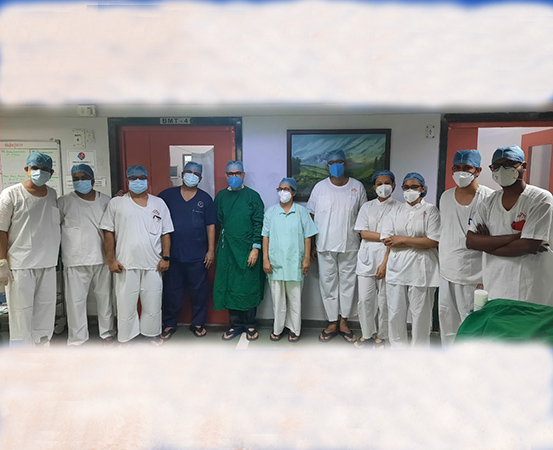
Researchers at Purdue University in the United States have developed a new type of cancer therapy that tricks tumour cells into absorbing a molecule that naturally blocks cell division, thereby slowing down the tumour’s growth.
In a study published in the journal Oncogene, the researchers detailed how tumours did not grow for a period of 21 days after absorbing a snippet of RNA, specifically microRNA-34a, compared to untreated tumours that tripled in size over the same period.
The researchers showcased their work in mice models. However, they hope that with more research it can be developed into a standalone or adjunct cancer therapy for humans.
“Cancer can begin almost anywhere in the human body. It is characterised by cells that divide uncontrollably. They can ignore signals to die or stop dividing, and even evade the immune system,” says Dr Andrea Kasinski, lead author and the William and Patty Miller Associate Professor of biological sciences at Purdue University.
“Our initial focus was upon triple negative breast cancer (TNBC) and non-small cell lung cancer (NSCLC). Cells in these two cancers overexpress the folate receptor greatly (~80%),” says Dr Kasinski.
This therapy combines a delivery system that targets cancer cells, with a specially modified version of microRNA-34a, a molecule that acts like the brakes on a car, thereby slowing or stopping cell division, she says.
In addition to slowing or reversing tumour growth, the targeted microRNA-34a strongly suppressed the activity of three genes – MET, CD44 and AXL – known to drive cancer and resistance to other cancer therapies— for at least 120 hours.
The results indicate that this therapy could be effective on its own and in combination with existing drugs when used against cancers that have built drug resistance.
Read More: Scientists discover four more genes linked to breast cancer
Read More: US researchers develop ground-breaking cancer-killing pill
MicroRNA-34a— the key player
MicroRNA-34a is a short double strand of ribonucleic acid (RNA). It is like a string of nucleic acids attached like the teeth of a zipper all along the length. The two strings of the microRNA are unevenly zipped together. One string guides a protein complex to the worksite (target mRNA) in the cell while the other string is destroyed.
In healthy cells, microRNA-34a is abundant, but its presence is dramatically reduced in many cancer cells.
While the idea of reintroducing microRNA-34a to cancer cells appears simple, the research team had to overcome many challenges in crafting an effective therapy as naturally occurring RNA breaks down rapidly. To improve the durability of the therapy, the team stabilized microRNA-34a by adding several small clusters of atoms along the length of the strand.
Experiments on mice models show that modified microRNA-34a endures for at least 120 hours after being introduced. Also, the fully modified microRNA-34a is not detected by the immune system, which will ordinarily attack the double-stranded RNA introduced to the body.
Delivery of microRNA to cancer cells
To ensure that the modified microRNA-34a makes it to cancer cells, the team attached the microRNA to a molecule of the vitamin folate. The surfaces of all cells in our body have receptors that bind to folate and draw the vitamin into the cell. However, the cells in many cancers – breast, lung, ovarian and cervical – have more folate receptors on their surface than healthy cells.
The tiny microRNA-34a and folate complex penetrate tumours and bind to the folate receptor on the cell surface. It is then drawn inside a little bag of cell membrane called a vesicle. Once inside the cell, some of the microRNA-34a can escape the vesicle and slow cell division.
The targeted nature of the therapy reduces the amount of the compound to be administered, which in turn reduces potential toxicity, side-effects and cost.
“When we acquired the data, I was ecstatic and confident that this approach is better than the current standard of treatment and there are individuals who will benefit from this,” said Dr Kasinski. In future, we wish to complete more extensive efficacy, toxicity, and pharmacologic studies, she adds.
“Next stage of our research involves utilisation of the fully modified miRNA into additional model systems for other tumours that overexpress the folate receptor, such as colon, and ovarian cancers, adding to our work in breast cancer,” says Dr Kasinski.
We will also be conducting a large-scale toxicity study which is required prior to moving into humans, she adds.
Read More: From stem cells to secretomes: the promise of more targeted therapies
Read more: How single cell RNA sequencing can improve cancer diagnosis

















